Understanding pygmy blue whale movement and distribution off north Western Australia
Michele Thums A I , Luciana C. Ferreira A , Curt Jenner B , Micheline Jenner B , Danielle Harris C , Andrew Davenport B D , Virginia Andrews-Goff E , Mike Double E , Luciana Möller F , Catherine R. M. Attard F , Kerstin Bilgmann F G , Paul G. Thomson H and Robert D. McCauley DA Australian Institute of Marine Science, Indian Ocean Marine Research Centre, University of Western Australia, Crawley, Australia.
B Centre for Whale Research (WA) Inc., Fremantle, Australia.
C Centre for Research into Ecological and Environmental Modelling, The Observatory, Buchanan Gardens, University of St. Andrews, St. Andrews, United Kingdom.
D Centre for Marine Science and Technology, Curtin University, Bentley, Australia.
E Science Branch, Australian Antarctic Division, Department of Agriculture, Water and the Environment, Kingston, Australia.
F Cetacean Ecology, Behaviour and Evolution Lab, College of Science and Engineering, Flinders University, Bedford Park, Australia.
G Department of Biological Sciences, Macquarie University, North Ryde, Sydney, Australia.
H Ocean Graduate School and The UWA Oceans Institute, The University of Western Australia, Perth, Australia.
I Corresponding author. Email: m.thums@aims.gov.au
The APPEA Journal 61(2) 505-511 https://doi.org/10.1071/AJ20202
Accepted: 30 April 2021 Published: 2 July 2021
Abstract
The blue whale (Balaenoptera musculus) is a listed endangered species under the Commonwealth Environment Protection and Biodiversity Conservation Act 1999. A distinct population of blue whales, the eastern Indian Ocean pygmy blue (EIOPB) whale, migrates along the Western Australian coast to the Banda Sea in Indonesia. Their distribution and the delineation of biologically important areas (BIAs) in the north west marine region of the Australian coast are based on limited data with two possible foraging areas identified in the Blue Whale Conservation Management Plan – off Ningaloo and Scott Reef. This uncertainty is a problem because effective management of the many anthropogenic activities associated with industrial development in this area (e.g. oil and gas, commercial shipping and fishing) relies on robust data. To this end, we combined new satellite tag deployments on EIOPB whales off Ningaloo Reef with existing satellite tracking data to provide sufficient data to understand the spatial and temporal extent of the population’s distribution and the movement behaviour in the north west. We also deployed passive acoustic instruments at North West Cape and combined these with existing passive acoustic data from the north west, including 18 deployed instruments and 14 ocean bottom seismometers (OBSs). To fill data gaps in our understanding of EIOPB whale broad scale distribution on their northern and southern migration, we undertook three passive acoustic surveys using ocean gliders, thereby providing extensive spatial coverage across the north west.
Keywords: cetacean, migration, foraging, endangered species, data deficient, satellite telemetry, passive acoustics.

Dr Michele Thums has a PhD in Marine Ecology from the University of Tasmania and a Bachelor of Science with first-class honours in Zoology from the University of Sydney. She is a senior research scientist at the Australian Institute of Marine Science (AIMS). Her research uses animal borne telemetry, survey data and a range of quantitative methods, usually involving data synthesis to understand the movement, distribution and important habitats of threatened and migratory species of marine megafauna in northern Australia. She has significant experience in leading large collaborative projects on these subjects involving industry, government and research institutions. For example, she is a co-leader of Theme A – Threatened and Migratory Species of the National Environmental Science Program’s (NESP) Marine Biodiversity Hub and she developed and led Theme 3, Threatened Species of the North West, in the North West Shoals to Shore Research Program (NWSS) funded by Quadrant Energy. |
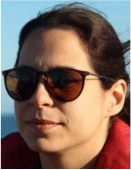
Dr Luciana Ferreira received her PhD from the University of Western Australia in 2017. She is currently a postdoctoral scientist at the Australian Institute of Marine Science (AIMS) with the NWSS research program. She is responsible for the development and application of models to distribution and movement data of marine megafauna (principally large cetaceans, sea turtles and sharks) in North West Australia and understanding key environmental drivers and overlap with anthropogenic threats. |

Curt and Micheline Jenner have conducted exploratory research into whale population biology and distribution since 1987 and their strengths lie in designing and conducting scientific studies in remote, ocean regions with logistically demanding conditions. They have published over 60 peer reviewed papers on cetaceans, receiving for their work the distinctions of AM (Order Australia), the Explorers Clubs’ prestigious Lowell Thomas Award and Australian Geographic’s Lifetime of Conservation Award. The Jenners own and operate a 250-tonne ice class research vessel, Whale Song, and their research has been the subject of numerous documentaries and a best selling book, Life Among Whales. |
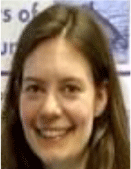
Dr Danielle Harris is a senior research fellow at the Centre for Research into Ecological and Environmental Modelling (CREEM), University of St. Andrews. One of CREEM’s research focuses is the development of statistical methods for estimating wildlife population abundances and densities, which are often required for management and conservation efforts. Dr Harris is currently a co-investigator (Co-I) on a project exploring cetacean acoustic behaviour and density estimation. From 2012 to 2019, Dr Harris was a postdoctoral research fellow acting as a co-principal investigator or Co-I on seven large-scale collaborative projects, all linked to cetacean density estimation from passive acoustic data, in particular focusing on new technologies and opportunistic monitoring platforms. She has been a member of the Southern Ocean Research Partnership’s Acoustic Trends Working Group since 2013, which focuses on acoustic monitoring of blue and fin whales, and was also a visiting research fellow at Cornell University between 2018 and 2020. |
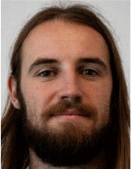
Andrew Davenport holds a Bachelor of Science (Coastal and Marine) from Curtin University. Since completing his degree, he has been working for and remains at the Centre for Whale Research, Oceanwise Australia, as a research assistant and research officer, respectively, since 2018. He has also conducted fieldwork for Curtin University’s Centre for Marine Science and Technology as a research assistant. In late 2020, Andrew became a director of New Growth Australia and a research scientist for TerraWise Australia. He has expertise in geospatial analysis, experimental design, GIS, statistics and field-based environmental sciences, applied to a range of projects including marine and coastal ecology, marine mammal biology and carbon sequestration. Andrew aspires to contribute to economic and environmentally sustainable solutions to current issues facing people. |

Dr Virginia Andrews-Goff has a PhD in Marine Ecology from the University of Tasmania. She is a marine mammal research scientist at the Australian Antarctic Division, undertaking research and providing scientific and technical advice to conserve and manage whales. She focuses on the movement of whales by analysing data transmitted by satellite tags, using these movements to characterise important habitat and to reveal how whales move through and use their environment. This information is critical to the data-driven management and conservation of whales, especially as populations continue to recover post-whaling and increasingly face new threats such as vessel strike, fishery entanglement and climate-mediated variability in the marine environment. |

From inter-tidal snails to great whales (with a lot of birds in between), Mike Double’s research career has been diverse. He started with a degree in genetics and zoology at Leeds University that was quickly followed by doctoral and postdoctoral research at Leicester University and the Australian National University (ANU). Following studies on fairy-wrens and albatrosses at ANU, Mike moved to the Australian Antarctic Division of the now Department of Agriculture, Water and the Environment. Currently Mike leads the Wildlife Ecology and Management Section within the AAD and led Australia’s scientific delegation to the International Whaling Commission. Mike frequently provides technical advice to the department, state governments and regulators on the conservation management of cetaceans and other marine mammals. |
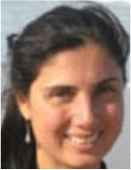
Luciana Moller is an associate professor in Marine Biology at the College of Science and Engineering, Flinders University of South Australia. She is the research leader of the Cetacean Ecology, Behaviour and Evolution Lab and Deputy Head of the Molecular Ecology Lab at that institution. She is also a member of the IUCN Cetacean Specialist Group. She received her PhD in Environmental Studies from Macquarie University, Sydney, and BSc (Biological Oceanography) from the Federal University of Rio Grande, Brazil. |

Catherine Attard was awarded a PhD in 2014 at Macquarie University, Sydney, for work on blue whale conservation genetics. She became a lecturer and researcher in molecular ecology at Flinders University, Adelaide, till mid-2019 and currently has academic status at Flinders University. She is a member of the Cetacean Ecology, Behaviour and Evolution Lab and the Molecular Ecology Lab at Flinders University. |

Dr Kerstin Bilgmann has been working in the field of marine mammal science since 1997. She was awarded a PhD at Macquarie University in Sydney and a MSc at Cologne University in Germany. Over the last decade, Kerstin has been a member of the Cetacean Ecology Behaviour and Evolution Lab (CEBEL) at Finders University, Adelaide, and has been leading the Marine Vertebrate Conservation and Evolution Lab (MVCEL) at Macquarie University, Sydney. She currently holds an Honorary Research Fellowship at Macquarie University. Kerstin is an expert in marine mammal ecology, evolution and behaviour. She specialises in genomic analyses, satellite telemetry and aerial survey distance sampling methodologies to answer conservation and management relevant questions. |

Dr Paul Thomson is a biological oceanographer with a PhD from the University of Tasmania. He previously worked for the Australian Antarctic Division but for the past 10 years has worked as a postdoctoral researcher and a senior research engineer with the IMOS Ocean Glider Facility at the University of Western Australia. He has previously served on the executive of the Australian Marine Science Association and remains a member to this day. |
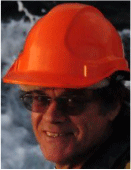
Professor Robert McCauley began his science career in 1987 working in the area of underwater acoustics, receiving his PhD in 2001 from James Cook University. Rob has been working at Curtin University since 1996 developing hardware, software, techniques and analytical approaches for passive acoustic monitoring and understanding impacts of man-made sound on marine fauna. Along with John Bannister and others, Rob began working on pygmy blue whales in the Perth Canyon in 1999 and has since had a passion for understanding their population dynamics and singing behaviour in the wider Australian context. |
References
Breiman, L. (2001). Random forests. Machine Learning 45, 5–32.| Random forests.Crossref | GoogleScholarGoogle Scholar |
Cato, D., Noad, M., Dunlop, R., McCauley, R., Gales, N., Salgado Kent, C., Kniest, E., Paton, D., Jenner, K., Noad, J., Maggi, A., Parnum, I., and Duncan, A. (2013). A study of the behavioural response of whales to the noise of seismic air guns: design, methods and progress. Acoustics Australia 41, 88–97.
| A study of the behavioural response of whales to the noise of seismic air guns: design, methods and progress.Crossref | GoogleScholarGoogle Scholar |
Double, M. C., Andrews-Goff, V., Jenner, K. C. S., Jenner, M.-N., Laverick, S. M., Branch, T. A., and Gales, N. J. (2014). Migratory movements of Pygmy Blue Whales (Balaenoptera musculus brevicauda) between Australia and Indonesia as revealed by satellite telemetry. PLOS ONE 9, e93578.
| Migratory movements of Pygmy Blue Whales (Balaenoptera musculus brevicauda) between Australia and Indonesia as revealed by satellite telemetry.Crossref | GoogleScholarGoogle Scholar |
Jonsen, I. D., Patterson, T. A., Costa, D. P., Doherty, P. D., Godley, B. J., Grecian, W. J., Guinet, C., Hoenner, X., Kienle, S. S., Robinson, P. W., Votier, S. C., Whiting, S., Witt, M. J., Hindell, M. A., Harcourt, R. G., and McMahon, C. R. (2020). A continuous-time state-space model for rapid quality control of argos locations from animal-borne tags. Movement Ecology 8, 31.
| A continuous-time state-space model for rapid quality control of argos locations from animal-borne tags.Crossref | GoogleScholarGoogle Scholar |
McCauley, R., and Jenner, K. (2010). Migratory patterns and estimated population size of pygmy blue whales (Balaenoptera musculus brevicauda) traversing the Western Australian coast based on passive acoustics. International Whaling Commission Scientific Committee, Report SC/62/SH26
Möller, L. M., Attard, C. R. M., Bilgmann, K., Andrews-Goff, V., Jonsen, I., Paton, D., and Double, M. C. (2020). Movements and behaviour of blue whales satellite tagged in an Australian upwelling system. Scientific Reports 10, 21165.
| Movements and behaviour of blue whales satellite tagged in an Australian upwelling system.Crossref | GoogleScholarGoogle Scholar |
Pirotta, V., Grech, A., Jonsen, I., Laurance, W., and Harcourt, R. (2019). Consequences of global shipping traffic for marine giants. Frontiers in Ecology and the Environment 17, 39–47.
| Consequences of global shipping traffic for marine giants.Crossref | GoogleScholarGoogle Scholar |
R Core Team (2020). R: A language and environment for statistical computing. R Foundation for Statistical Computing Vienna, Austria.
Van Waerebeek, K., Baker, A., Félix, F., Gedamke, J., Iñiguez, M., Sanino, G., Secchi, E., Sutaria, D., van Helden, A., and Wang, Y. (2007). Vessel collisions with small cetaceans worldwide and with large whales in the Southern Hemisphere, an initial assessment. Latin American Journal of Aquatic Mammals 6, 43–69.
| Vessel collisions with small cetaceans worldwide and with large whales in the Southern Hemisphere, an initial assessment.Crossref | GoogleScholarGoogle Scholar |
Wilcock, W. S. D., Stafford, K. M., Andrew, R. K., and Odom, R. I. (2014). Sounds in the ocean at 1–100 Hz. Annual Review of Marine Science 6, 117–140.
| Sounds in the ocean at 1–100 Hz.Crossref | GoogleScholarGoogle Scholar |


